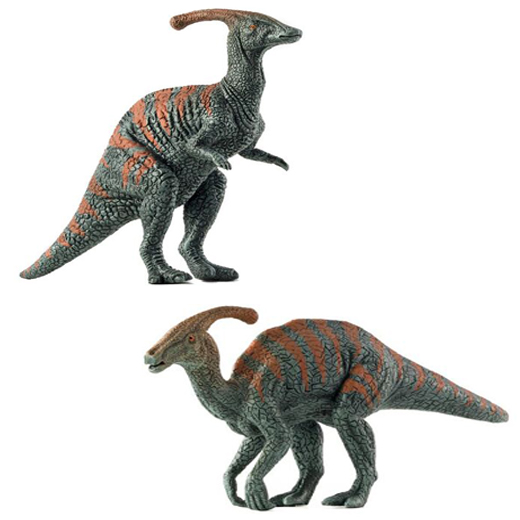Everything Dinosaur Newsletter Features Mojo Models
Mojo “Prehistoric and Extinct” models feature in the latest edition of the Everything Dinosaur newsletter. To celebrate Mojo Fun models coming into stock at Everything Dinosaur, the latest company newsletter was dedicated to these excellent prehistoric animal models.
Mojo Fun Prehistoric Animal Figures Feature in the Everything Dinosaur Newsletter
Picture credit: Everything Dinosaur
Mojo Fun Models
Everything Dinosaur has introduced all thirty-one of the current figures made by Mojo in their “Prehistoric and Extinct” model range. Unlike most other figure manufacturers, the Mojo range includes some recently extinct (or at least currently regarded as extinct), animals – creatures such as the Thylacine and the Quagga (a sub-species of Plains Zebra)*. Naturally, the first model to be featured in the newsletter is the T. rex, specifically the green hunting Tyrannosaurus rex. Mojo has a total of six “Tyrant Lizard King” replicas in its range, including a spectacular 1:40 scale model, which can be seen in the picture below (bottom right), as well as a model of a juvenile T. rex.
Marine Reptiles and Prehistoric Mammals in the Mojo “Prehistoric and Extinct” Range
Picture credit: Everything Dinosaur
Mojo Fun – Animal Planet
Mojo was founded eight years ago (2009), the company focuses on the design and production of high quality models. Better known as “Mojofun”, the first model range was introduced in 2011 and the company’s product portfolio has grown steadily since. The enthusiastic Mojo team members have plenty of ambition, they intend to continue to create the finest quality models that they can and to increase the range of animals featured.
The thirty-one models in the “Prehistoric & Extinct” range represent a total of nineteen different creatures, all of them are either reptiles or mammals and they lived during the Mesozoic or the Cenozoic Eras. The breakdown is as follows:
- Dinosaurs = nine dinosaurs represented (4 carnivores and 5 herbivores).
- Prehistoric Mammals = six animals are represented.
- Recently Extinct* = two models (Thylacine – Tasmanian Tiger and the Quagga)
- Marine Reptiles = one model (Tylosaurus)
- Prehistoric Crocodile = one model (Sarcosuchus)
Several of the Mojo “Prehistoric and Extinct” models have recently been re-painted, allowing a number of new colour variants to be introduced. The Mojo Parasaurolophus models are a case in point (see picture below).
Mojo Parasaurolophus Models (Biped and Quadruped)
Picture credit: Everything Dinosaur
Studies of the fossilised bones of the duck-billed dinosaur Parasaurolophus indicate that this large, Late Cretaceous dinosaur was a facultative biped. It probably spent most of its time on all fours, but when the need arose, for example, to flee an attacking tyrannosaur, this dinosaur could run using just its hind legs. We congratulate Mojo for including two versions of Parasaurolophus in its model range – one in a bipedal pose, the other representing Parasaurolophus as a quadruped.
Mojo “Prehistoric and Extinct” Models
Almost as many mammal models are included in the ” Prehistoric and Extinct” range as dinosaurs. Model collectors have seen the number of prehistoric animal models in production decline in recent years, the addition of figures such as the Mojo Smilodon, Deinotherium and the Entelodont Daeodon, to Everything Dinosaur’s inventory is very welcome.
A spokesperson from Everything Dinosaur commented:
“Mojo produces Velociraptor, Triceratops and Stegosaurus models and of course, this range offers a variety of tyrannosaurs, but one of the attractions for us is that Mojo also offers some of the less common prehistoric animals such as a Hyaenodon replica and a Brontotherium. We know that these types of replicas are greatly appreciated by model collectors.”
To view the range of Mojo “Prehistoric and Extinct” models available from Everything Dinosaur: Mojo Prehistoric and Extinct Models.
Extinction*
The last known Thylacine (Tasmanian Tiger), died in captivity in 1936. It is officially recognised as extinct, but a genetic research programme has been established for nearly twenty years with the aim of ultimately re-introducing these animals via cloning. In addition, periodic sightings and reports of living Thylacines both from Tasmania and the Australian mainland have prompted a team of scientists to set camera traps in a remote part of northern Queensland to see if they can obtain evidence of a living population. To read more about this: The Hunt for Tasmanian Tigers.
The Quagga Project was established in 1987 to reintroduce Quagga-like phenotypes via a selective breeding programme.
Visit the Everything Dinosaur website: Everything Dinosaur.
To subscribe to the Everything Dinosaur newsletter, email us: Contact Everything Dinosaur.









Leave A Comment